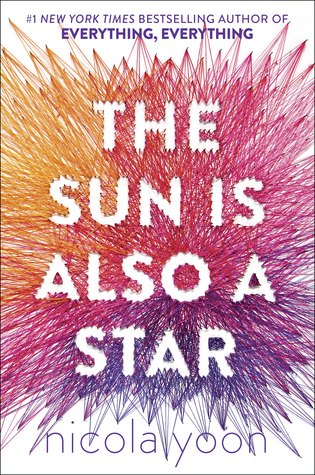 I saw a trailer for the upcoming movie, and though I'm not a huge fan of romance movies, I love Yara Shahidi, and I LOVE that the story is about a mixed race couple with an Asian male lead! As soon as I realized the movie was based on a book, I wanted to make sure I read the book before seeing the movie.
I saw a trailer for the upcoming movie, and though I'm not a huge fan of romance movies, I love Yara Shahidi, and I LOVE that the story is about a mixed race couple with an Asian male lead! As soon as I realized the movie was based on a book, I wanted to make sure I read the book before seeing the movie.
The Sun is Also a Star is a love story in one day à la Before Sunrise, but set in New York City against a backdrop of immigration. Natasha is Jamaican, an undocumented immigrant on the verge of being deported, and Daniel is Korean-American, with first-generation immigrant parents. Their lives and experiences as an immigrant and a child of immigrants very much shape who they are and how they think.
I am the first to roll my eyes at cliché love-at-first-sight romance, but the author meets the challenge head-on: Natasha herself is an intelligent, practical, science-oriented person who doesn't much believe in love, let alone "instalove". Daniel, on the other hand, is a romantic, a perfect foil for Natasha's skepticism. As they get to know each other, they banter back and forth about science and philosophy in a way that is thoughtful, not shallow or pretentious, which is how such conversations frequently come across. I like, too, how each person is confident in their own beliefs, yet willing to listen to the other person's ideas.
It's a quick read, with very short chapters that mostly alternate between Daniel and Natasha narrating the story from first-person perspectives. I particularly enjoyed the storytelling angle that involved additional chapters written with a third-person omniscient point of view. As the events between Daniel and Natasha unfolded, sometimes a brief chapter of explanation would pop up; for example, if the story touched upon Natasha's afro, we might get a quick history of black hair, to give more context to the situation. I know it sounds weird, or didactic, but really I found these interludes light and informative and relevant to the story.
Also, sometimes there were chapters thrown in to give a glimpse of the life of a person Natasha or Daniel interacted with, even if tangentially. These chapters I found kind of intriguing. First, they are used in a way to push the idea of fate. Are coincidences really just coincidences, or is the universe contriving to make something happen? Does fate ensure that if you have a missed opportunity at one point, then another opportunity will present itself later? Second, they seem to illustrate a commonly held idea that "everyone has a secret struggle that you don't know about." Personally, while I think that's true for a lot of people - maybe even most people - surely there must be some people out there who are content and not internally conflicted on any given day? But almost all the chapters about other people described complex personal situations that were overall sad and depressing, like, yes, every person does have something difficult to deal with. Taken together, it was like the book was saying that even though I wished for a happy ending for Natasha and Daniel, there really is no "happily ever after" because you don't know how things might change later.
I enjoyed this book a lot, and was surprised by its balance between being a romantic jaunt in young people's lives and its ability to put forth thoughtful ideas. I am a little suspicious that the movie will drop most of the secondary characters to focus on Natasha and Daniel, and I understand why they would do that, but I think a lot will be lost, and I expect I will end up thinking the book is better than the movie (as usual).





